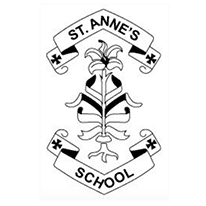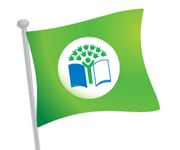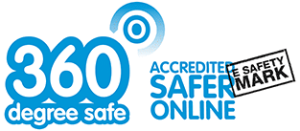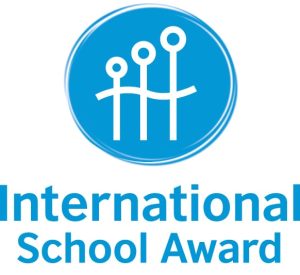Maths Curriculum Intent
Addition and Subtraction Calculation Policy
Multiplication and Division Calculation Policy
Our aim at St. Anne’s is to give the pupils a love of mathematics and set high expectations for all learners. We do this by providing the children with a fun and engaging curriculum starting at EYFS and extending through to year 6, where they carry out hands-on activities that enable them to master the maths curriculum. We aim to ensure that by the time the children leave, they are confident mathematicians, who are secondary-ready and equipped to apply the mathematics they have learnt to real life situations – as they have not just learnt concepts but have embedded them securely and consistently across the school to a deeper level of understanding. The maths curriculum is coherently planned and sequenced with a mastery approach in mind. Small sequential steps allow the fundamental skills to be fully embedded before moving on to more in-depth features of maths. We use the White Rose scheme of work from Reception to Year 6. However, teachers have the freedom and flexibility to adapt and enhance this scheme to ensure it is appropriate for their learners. All of our learners are encouraged and supported to use concrete, pictorial and abstract representations to help build procedural and conceptual knowledge.
Implementation
The maths curriculum incorporates the teaching of mathematical vocabulary which is interwoven through it and underpins new concepts, in order to attempt and overcome the language barriers that can hinder progress. It is our intention to ensure that by the end of our children’s primary education, they have acquired a full understanding of the maths curriculum and are confident with these skills to take them on into the real world and their future aspirations.
Using White Rose, teachers plan ambitious lessons for their specific year group using a concrete, pictorial and abstract approach. The teaching of vocabulary is fundamental to this and is taught explicitly, ensuring it is linked to the topic specifically taught within lessons and is displayed on working walls. We ensure that teachers are ambitious for all children including SEND and disadvantaged pupils and ensure that all children are provided with appropriate challenge to further their learning and are given intervention and support when required. Teachers are expected to use adaptive teaching to meet the needs of their children on a daily basis. Through the use of adaptive teaching, we provide opportunity for all pupils to experience success in mathematics by:
- Adapting lessons, whilst maintaining high expectations for all, so that all pupils have the opportunity to meet expectations.
- Balancing input of new content so that pupils master important concepts.
- Making effective use of teaching assistants during maths lessons and for targeted intervention.
The curriculum is coherently planned and is objective-led ensuring that all children go through the process of fluency, problem solving and reasoning. It is also fundamental that children are given time to revise and practise previously taught objectives and non-negotiables to ensure they remember and retain their knowledge.
In EYFS, the teaching of maths occurs daily though continuous provision and explicit teaching. Mathematics is explored through different contexts, including story books, puzzles, songs, rhymes and games. Our EYFS practitioners ensure they make the most of moments throughout the day to highlight and use mathematics, for example, in daily routines, play activities and other curriculum areas. They seize any opportunity to reinforce mathematical vocabulary and this is displayed in their classroom. Also, they create opportunities for extended discussion of mathematical ideas with children. EYFS staff use manipulatives and representations to further develop understanding and encourage children to represent problems in their own way, for example with drawings and marks. In the outdoor provision, maths is also encouraged and children are given the opportunity to explore and reinforce their mathematical understanding through play.

In KS1 and KS2, maths is taught daily for at least one hour. Lessons consist of ‘Flash Back 5’ to revise, practice and reinforce past learning; arithmetic to ensure it is constantly practiced and that children have fast mental recall of key facts such as number bonds and that fluency in the formal written methods is secure; and times table practice. The children then complete a lesson relating to the unit of work being studied with a clear objective that should be achieved by the end of the session. Children are exposed to a range of fluency, problem solving and reasoning activities during a lesson. On some days, a fluency focus may be observed to allow children to practice and secure skills and on other days, a lesson may be dedicated to reasoning or problem solving allowing for mastery once children are secure in that particular area of learning. Most days, the children will encounter a mathematical diet of all three.

Assessment
In EYFS, teachers ensure that teaching builds on what children already know. A variety of methods are used to assess children’s mathematical understanding, practitioners check what children already know in a variety of contexts. Information collected is used to inform next steps in teaching. Targeted support delivered in small groups or 1:1 basis is used to provide extra support to ensure all children make progress in mathematics.
In KS1 and KS2, we use assessment in the formative and summative form to build upon pupils’ existing knowledge and understanding. Assessment is used not only to assess outcomes, but to also provide teachers with information about what pupils do and do not know. This then informs planning of future lessons and generates the focus of targeted support and intervention. Feedback is given verbally and in written form. Teachers live mark during lessons and provide instant verbal feedback. Through marking and verbal feedback, misconceptions are addressed and children are given the opportunity to correct or practice any areas of difficulty. Structured interventions are planned to provide additional support and are guided by pupil assessment.

Curriculum Progression
Curriculum progression is planned from the beginning of a pupil’s education through focusing on core content, to develop pupils’ motivation and to allow more breadth and depth later. St Anne’s curriculum details the core facts, concepts, methods and strategies that give pupils the best chance of succeeding in the subject. Linked facts and methods are taught in an order that helps pupils to build on their existing skills and knowledge. Each lesson begins with a flash back, allowing children to revisit past learning and incorporates an arithmetic section ensuring constant practice of the basic number skills, efficient methods of calculation and non-negotiables for each year group. Sequences of learning allow pupils to recall the facts and methods they need in order to be successful at different types of problem-solving. Our ‘Ready to Progress’ documents aid planning and teachers are given the flexibility to elongate and enrich the White Rose scheme of work to ensure children are secure in their understanding prior to moving on to new learning.
The expectation is that the majority of pupils will move through the programmes of study at broadly the same pace. However, decisions about when to progress should always be based on the security of pupils’ understanding and their readiness to progress to the next stage. Pupils who grasp concepts rapidly should be challenged through being offered rich and sophisticated problems before any acceleration through new content. Those who are not sufficiently fluent with earlier material should consolidate their understanding, including through additional practice.
At St Anne’s we classify the mathematical curriculum content into declarative, procedural and conditional knowledge:
Our pedagogy on curriculum sequencing:
Declarative knowledge
- Teachers create the best possible start for pupils by closing the school-entry gap in knowledge of the early mathematical code: facts, concepts, vocabulary and symbols.
- Pupils are taught core facts, formulae and concepts that are useful both currently and also in the next stage in learning.
- Teachers help pupils to develop their recall of core declarative knowledge, rather than having to work things out, guess or look for clues.
Procedural Knowledge
- Younger pupils are taught mathematical methods that encourage them to use recall over derivation.
- Older pupils are taught efficient, systematic and accurate mathematical methods that they can use for more complex calculations and in their next stage of learning.
- Teachers help pupils to use these methods to see new connections of number, geometry and time.
- Pupils are encouraged to use core mathematical methods, rather than resort to guesswork, look for clues or attempt to use trial and error.
Conditional Knowledge
- Pupils are taught topic-specific strategies and how to match these to different types of problem.
- Pupils are confident using linked facts and methods that are the building blocks of strategies, before strategies are taught.
- Teachers encourage pupils to use core, systematic strategies, rather than resorting to guesswork or trial and error.
Meeting Pupils’ Needs:
- New content builds on the knowledge and understanding that pupils have previously acquired.
- Curriculum progression is planned intentionally, rather than happening by choice or chance.
- Rehearsal sequences align with curriculum sequences.
- Pupils who are at risk of falling behind are given more time to complete tasks, rather than different tasks or curriculums. This helps them to commit core facts and methods to long-term memory.
Impact
EYFS
Children are taught to count confidently, develop a deep understanding of the numbers to 10, the relationships between them and the patterns within those numbers.
By providing frequent and varied opportunities to build and apply this understanding – such as using manipulatives, including small pebbles and tens frames for organising counting – children will develop a secure base of knowledge and vocabulary from which mastery of mathematics is built.
The curriculum includes rich opportunities for children to develop their spatial reasoning skills across all areas of mathematics including shape, space and measures.
It is important that children develop positive attitudes and interests in mathematics, look for patterns and relationships, spot connections, ‘have a go’, talk to adults and peers about what they notice and not be afraid to make mistakes.

Key Stage 1
The principal focus of mathematics teaching in key stage 1 is to ensure that pupils develop confidence and mental fluency with whole numbers, counting and place value. This should involve working with numerals, words and the four operations, including with practical resources [for example, concrete objects and measuring tools]. At this stage, pupils should develop their ability to recognise, describe, draw, compare and sort different shapes and use the related vocabulary.
Teaching should also involve using a range of measures to describe and compare different quantities such as length, mass, capacity/volume, time and money. By the end of year 2, pupils should know the number bonds to 20 and be precise in using and understanding place value. An emphasis on practice at this early stage will aid fluency. Pupils should read and spell mathematical vocabulary, at a level consistent with their increasing word reading and spelling knowledge at key stage 1.

Lower Key Stage 2
The principal focus of mathematics teaching in lower key stage 2 is to ensure that pupils become increasingly fluent with whole numbers and the four operations, including number facts and the concept of place value. This should ensure that pupils develop efficient written and mental methods and perform calculations accurately with increasingly large whole numbers.
At this stage, pupils should develop their ability to solve a range of problems, including with simple fractions and decimal place value. Teaching should also ensure that pupils draw with increasing accuracy and develop mathematical reasoning so they can analyse shapes and their properties, and confidently describe the relationships between them. It should ensure that they can use measuring instruments with accuracy and make connections between measure and number.
By the end of year 4, pupils should have memorised their multiplication tables up to and including the 12-multiplication table and show precision and fluency in their work. Pupils should read and spell mathematical vocabulary correctly and confidently, using their growing word reading knowledge and their knowledge of spelling.
Upper Key Stage 2
The principal focus of mathematics teaching in upper key stage 2 is to ensure that pupils extend their understanding of the number system and place value to include larger integers. This should develop the connections that pupils make between multiplication and division with fractions, decimals, percentages and ratio.
At this stage, pupils should develop their ability to solve a wider range of problems, including increasingly complex properties of numbers and arithmetic, and problems demanding efficient written and mental methods of calculation.
With this foundation in arithmetic, pupils are introduced to the language of algebra as a means for solving a variety of problems. Teaching in geometry and measures should consolidate and extend knowledge developed in number. Teaching should also ensure that pupils classify shapes with increasingly complex geometric properties and that they learn the vocabulary they need to describe them.
By the end of year 6, pupils should be fluent in written methods for all four operations, including long multiplication and division, and in working with fractions, decimals and percentages. Pupils should read, spell and pronounce mathematical vocabulary correctly.

Addition and Subtraction Progression Map
Geometry- Properties of Shape Progression Map
Multiplication and Division Progression Map




















